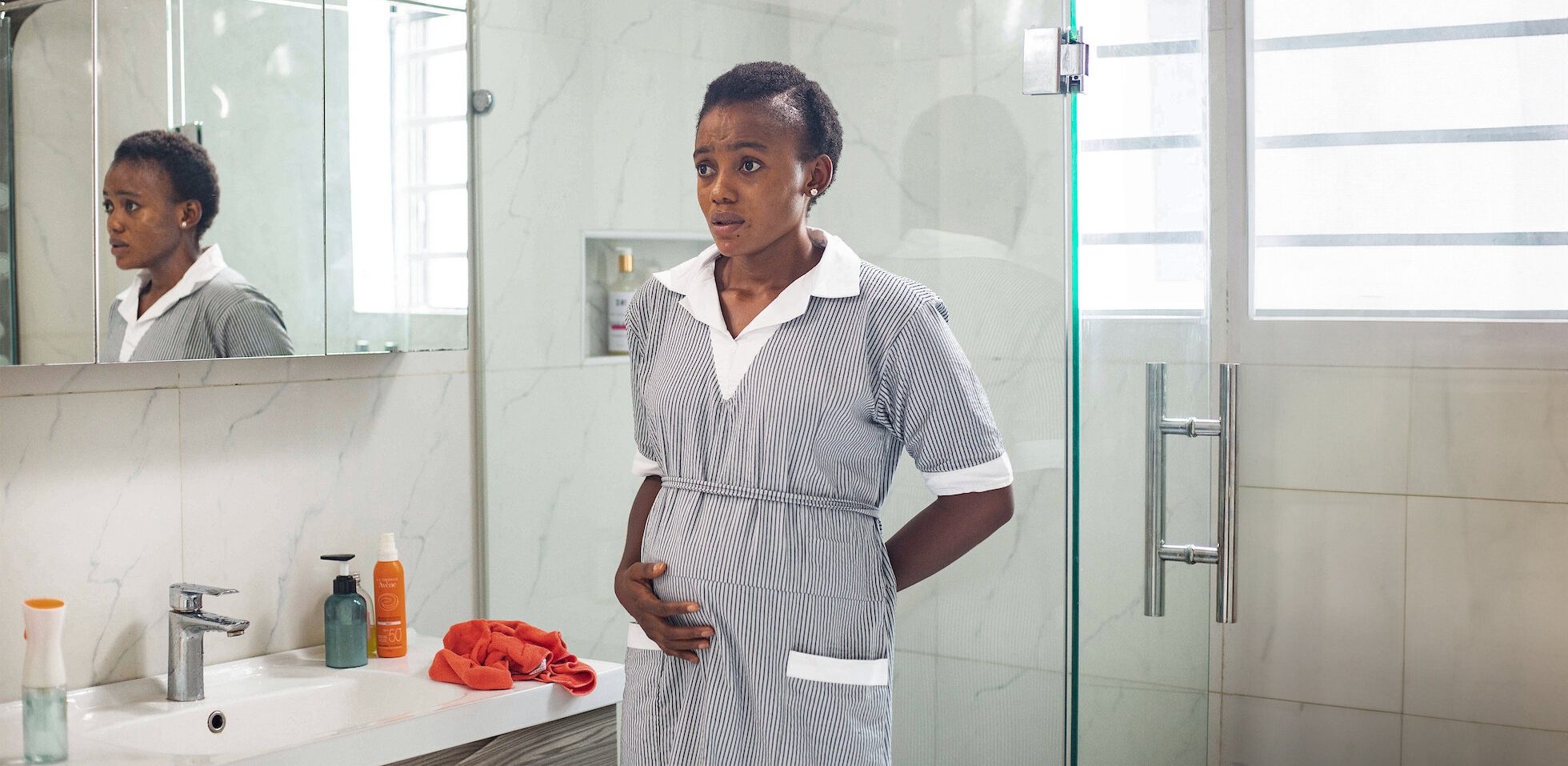Directed by Walter Taylaur, ‘Baby Farm’ follows Adanna, who, while struggling with an unplanned pregnancy, finds herself homeless in the ruthless streets of Lagos, Nigeria. Relief comes in the form of the Evans Foundation, an NGO promising her a life of comfort if she agrees to put her baby up for adoption. Before she has time to process this information, her life turns upside down. Trapped and forced to become a child harvester, Adanna begins to make connections with the other women who are being held captive while carefully looking for a chance to claw her way out. While the protagonist fights from inside the walls, a search for truth continues outside, being obstructed by the rich and corrupt. The desire for freedom and affection in the face of tragedy stands at the heart of this Nigerian crime drama. SPOILERS AHEAD.
Baby Farm Loosely Draws Inspiration From Real-Life
‘Baby Farm’ is vaguely inspired by the real-life occurrence of baby farms and factories, which either manipulate or kidnap young women, often teenagers, and exploit them to raise babies to be sold off. Nigeria, the place where the narrative is set, has its share of many seemingly innocent orphanages, NGOs, and hospitals, which double as centers of untold horrors. Onyinye Odokoro, the actor who plays Adanna, described her preparation for the role, which involved volunteering with an NGO called Nurses of Initiative Campaign. The actor further shed light on her experience of listening to voice notes from victims of various baby farms and how they reminded her of the character she played in the show.

Heidi Uys, the show’s co-writer, remarked that while the studio has produced several stories before, ‘Baby Farm’ stands out as their darkest venture yet. It is possible that the show is a composite of the multitudes of such cases. According to Tsitsi Matekaire, Equality Now’s global lead on sex trafficking, these baby factories became a concern for UNESCO as far back as 2006, and since then, they have become a much larger phenomenon. Male children are often deemed the most valuable, with women often being subjected to hormone treatments to artificially boost the success rates of these operations. Often, these farms are also the site of sexual abuse, something that the show captured as part of Doctor Evans’s abusive practices.
Over the years, baby factories have risen to prominence for a number of reasons. Firstly, they come as an easy outlet to defuse the stigma attached to teenagers with unwanted pregnancies. In their desperation, they are convinced to give up their children in return for financial aid. Secondly, they satisfy the high demand for babies, particularly by infertile couples. Often unwilling to deal publicly with surrogacy or adoption, these rich couples prefer to deal under the table and procure children. Within the narrative of the show, both of these factors are addressed, but with a slightly different angle. Cherise and David, the couple yearning for a child, fail to qualify for adoption due to the family’s criminal history, whereas the protagonist gives up her baby, fearing the life of poverty they would have to lead with her.
Baby Farm Might be Informed by Real Survival Stories
A recurring plot beat in ‘Baby Farm’ is the series of daring escapes attempted by the protagonist, including hiding in a laundry bag and pretending to be the cleaning staff. During one of these attempts, Adanna’s friend Ebun manages to exit the building and seek help. While this is a fictional sequence, it might be vaguely inspired by some real-life counterparts, such as the case of seven women escaping from a Lagos detention facility in 2019 and eventually being rescued by the authorities. However, displays of such bravery are rare and merely give a glimpse of the true scope and scale of these criminal operations. While the show might have used some of these events as references, they merely amplify the fictional story being used as a vehicle for generating awareness for the cause.

The Nigerian government’s response to these rampant cases of child harvesting and trafficking has been loud and consistent, but to little avail. However, such campaigns can serve as a possible inspiration for the police raid in the final episode of the show, which brings down the Evans Foundation. For instance, a 2011 raid by the Nigerian Police reportedly freed over 30 pregnant girls who were held at a hospital that was masquerading as a foundation to help teenagers with unplanned pregnancies. While similar investigations continue in reality, headed by the National Agency for the Prohibition of Trafficking in Persons, ‘Baby Farm’ showcases a slightly cynical outcome. The Evans couple, having bribed the Police Chief, escape prosecution, with the blame falling on the nurses instead. The elites of the narrative remain innocent in the eyes of the corrupted law, with the captives having to face the brunt of the raid.
Read More: Baby Farm Ending Explained: Does Barbara Kill Doctor Evans?


